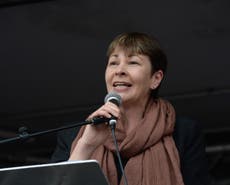COP21: The global warming targets agreed in Paris will drive a carbon-capture revolution
Beginning in 2016, leaders will have to begin to live up to their pledges

The Paris agreement on climate change refers to limiting temperature rises to 1.5C above the pre-industrial average, and includes a “ratchet mechanism” of five-yearly reviews of progress, commencing in 2019. Together, this powerful combination could lead to full decarbonisation by the middle of the century. The depth of the agreement beyond national politics is also important. Bill Gates committed to the largest green innovation fund ever, mayors of 1,000 cities committed to 100 per cent renewable energy by 2050, and the talk in business circles was all about opportunity, rather than cost.
Beginning in 2016, leaders will have to begin to live up to their pledges. If we are to limit temperature rise to 1.5C, delay by even a single year will be costly. The world is already at 1C, and the carbon budget (the amount of atmospheric carbon we can emit before reaching 1.5C) is half what is allowable under a limit of 2C. In a very short time we will be out of carbon budget to stay below 1.5C, so regardless of how fast we limit fossil fuels, we will need to invest in third-way technologies to capture CO2 from the atmosphere.
A world committed to a 1.5C limit will need to phase out the burning of coal before 2030, and to have decarbonised transport systems before 2050. This represents an enormous opportunity for clean energy technologies. Wind and solar will need to increase rates of implementation several times over, and the deployment of electric vehicles, along with alternative fuels for aviation and shipping, will need to accelerate sharply.
A huge investment in innovation in third-way technologies is also required. To cut atmospheric CO2 by 1ppm (parts per million) requires the removal of 18 gigatonnes of it – for which you’d need to plant a forest four times the size of Australia. Carbon sequestration in forests, crops, rangelands, biochar and wood industry products can play a part, but seaweed farms offer far larger carbon capture potential. Because they are excellent habitats for fish and shellfish, they also offer huge protein yields. But ways will need to be found, and financed, to process the kelp and sequester the carbon it captures.
Cement manufacture accounts for 5 per cent of global emissions, and the transition to carbon-negative concretes, already a nascent industry, must be accelerated, along with the use of silicate rocks, which sequester CO2 as they weather. If we can quarry and crush 5 to 6 gigatonnes of silicate rock per annum using clean energy, we can capture and store 3 to 4 gigatonnes of atmospheric CO2. Nascent industries in plastics and carbon fibres made from CO2 also have a role to play.
If the idea of such changes by mid-century sounds like sci-fi, just imagine the changes that occurred between 1915 and 1950 – from the horse-drawn to the nuclear era. The rate of change has only accelerated since, and the problem that will drive the innovation – the greenhouse gases that will drive ever worse climatic shifts – will not go away of its own accord. Indeed, the innovation revolution that drives the third way promises to make the clean energy revolution look like small beer.
Tim Flannery’s Atmosphere of Hope is published by Penguin






Join our commenting forum
Join thought-provoking conversations, follow other Independent readers and see their replies